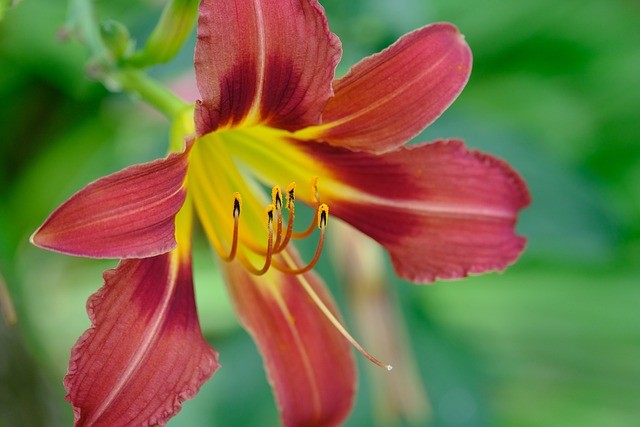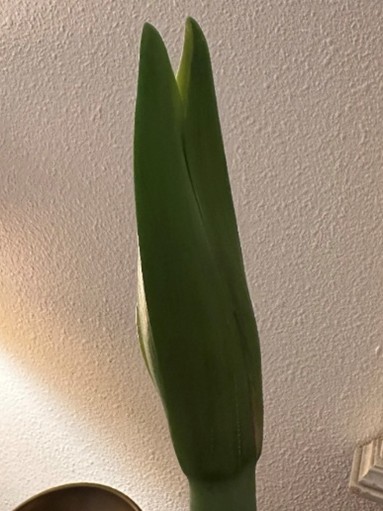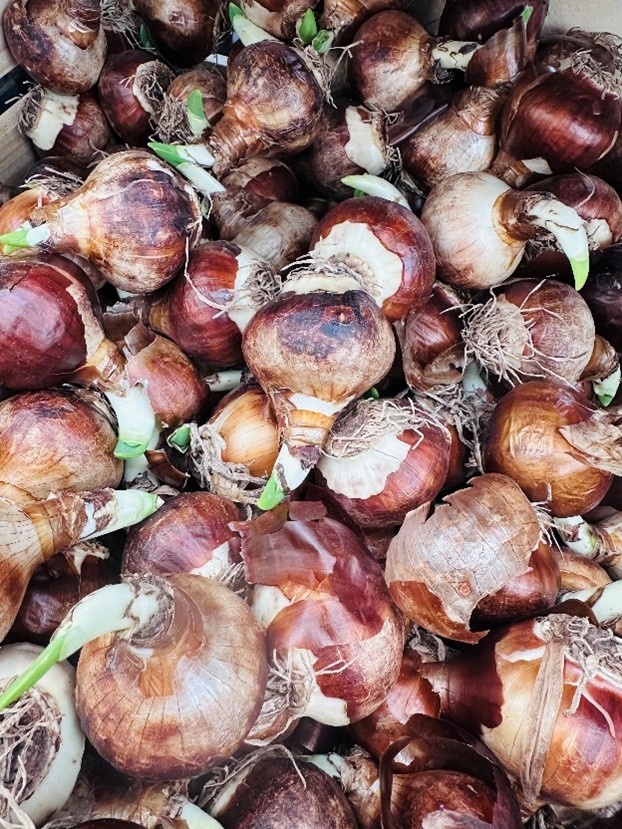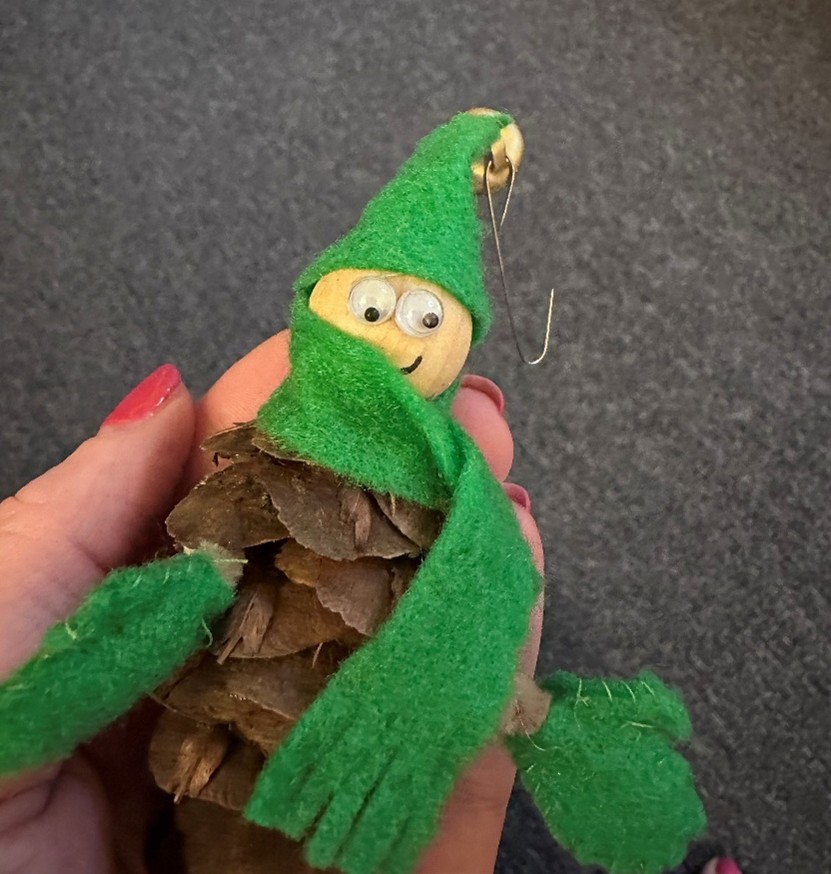
As I push my garden shovel into the clay, gravel, and pebbles of my garden, I feel a mix of excitement and mild fear. Most of the time I wonder if the squirrels will ruin my ambitious spring bulb planting. (For new gardeners: Spring bulbs are planted in the ground in the fall and make their first appearance in the spring.) I also hope I timed it right.
Still, I'm grateful for this small window of dry weather today where I can avoid the famous Pacific Northwest rain that's settled in for the season, just as I'll soon curl up on my couch with a blanket and a nice book.
This time of year I like to take stock of what went well in the garden and what I learned. My biggest takeaway? You can't fight against nature, especially not against curious creatures that treat raised beds like their personal buffet. Two rounds of cucumbers, then the green beans…gone. Mysterious holes, cut stems, missing carrots. Lessons learned.
My last-minute fall planting includes daffodils (the nursery swears they're rabbit-proof), pink parrot tulips, muscari (grape hyacinths), a few berry-rich wintergreens, and some thyme and rosemary. Oh, and those poor plants that have been hanging around my deck since June. Today they finally found a home. Ready or not, I commit.
Now comes the slower season when I trade my gardening gloves for a teacup and turn inward. It's time to plan, dream and bring a little of the outside world inside. Because to be honest: I can never stop loving nature.
As the evenings grow long and dark, we begin to celebrate light in new ways: the glow of a fireplace, a simmering pot of soup, flickering candles on the dinner table. It is a time of year that reminds us that there is still life stirring underground and sometimes in our homes. An amaryllis bulb that grows quietly from root to flower is a joy this time of year.

As the holiday lights begin to twinkle through the foggy, rainy nights, they fill the void left by summer brightness. Even in the darkness, beauty finds a way to shine. That's why we enjoy bringing nature into the house so much. stay connected, create something, celebrate. Here are a few easy ways to fill your home with vibrant beauty this winter.

A holiday table in the autumn forest
Bring a touch of forest to your table, not only with family recipes but also with nature decorations. Collect treasures from your garden: pine cones, colorful leaves, twigs, moss, small pumpkins and evergreen branches. Little things from your bedroom garden can be a great addition.
Sword ferns are green all winter and my camellias start to bud for their beautiful show in a few months; Dark, waxy leaves of camellia and fern fronds are perfect companions. Even these few items make beautiful additions to your holiday table.

Arrange the materials in the center of your table around some larger sticks or branches, add candles or mushroom-shaped accents, and you've created a woodland wonderland. I added a few felt mouse ornaments to mine that I hope will entertain my guests and we can hang on the Christmas tree later.
If you have children or grandchildren, take them on a nature walk to collect the materials. It's a lovely way to bring back memories and a woodland table will stimulate all their imagination and excitement.

Growing winter joy: forcing flower bulbs into the house
Every winter I plant a few flower bulbs to add a bit of green to my kitchen. My favorite is the amaryllis. They are large, elegant and fast growing enough to enjoy every day. They come in deep red, pure white or pinkish-white and are easy to grow.

Find a pot about 6 to 8 inches deep (no drainage holes necessary), fill it with pea gravel, and place the bulb so the bottom third is submerged, root side down. Fill water to the bottom of the bulb and leave the lid on. In six to ten weeks, you'll have a showy bloom that feels like a reward for your patience.
Paperwhite daffodils are another winter favorite with tall, elegant stems and delicate white flowers. Her scent is strong. Some love it, others not so much; Try mildly scented varieties like Inbal or Ariel as a nice alternative. I like to use a clear glass vase so I can watch the roots grow. They are just as beautiful as the flowers and are a feast for the eyes of children. These require four to six weeks from germination to flowering.


Pinecone Elves: A Whimsical Winter Craft
My first year as a new mom, I made a bunch of them for our tree that only had a few ornaments. I went for a walk and was able to collect pine cones and get some felt pieces from the craft store for hats, scarves and shoes. When I take them out of the jewelry box, I remember how they were made and the slow times you have at home when a baby is trying to pass the time while he or she is sleeping.
Still, some of my favorite ornaments are a reminder that handmade things like gardens carry the warmth of the hands that created them.
If you have extra pine cones in your garden, turn them into adorable little elves. You need:
- Small wooden beads or balls (for heads)
- Pipe cleaners (for arms and legs)
- Felt (for mittens, shoes and scarves)
- Googly eyes and hot glue
- Sharpie with a fine tip
Glue the wooden bead to the top of the pine cone as a head, twist pipe cleaners into arms and legs, and dress your elf with felt accessories. Add googly eyes and a smile with a marker.

As the rain falls and the days grow shorter, remember that life in the garden never really ends. It just moves inward for a while.
Jill Hall is a local watercolor artist, gardener and maker. www.jillhallart.com
Planting Edmonds is a monthly column by and for local gardeners.